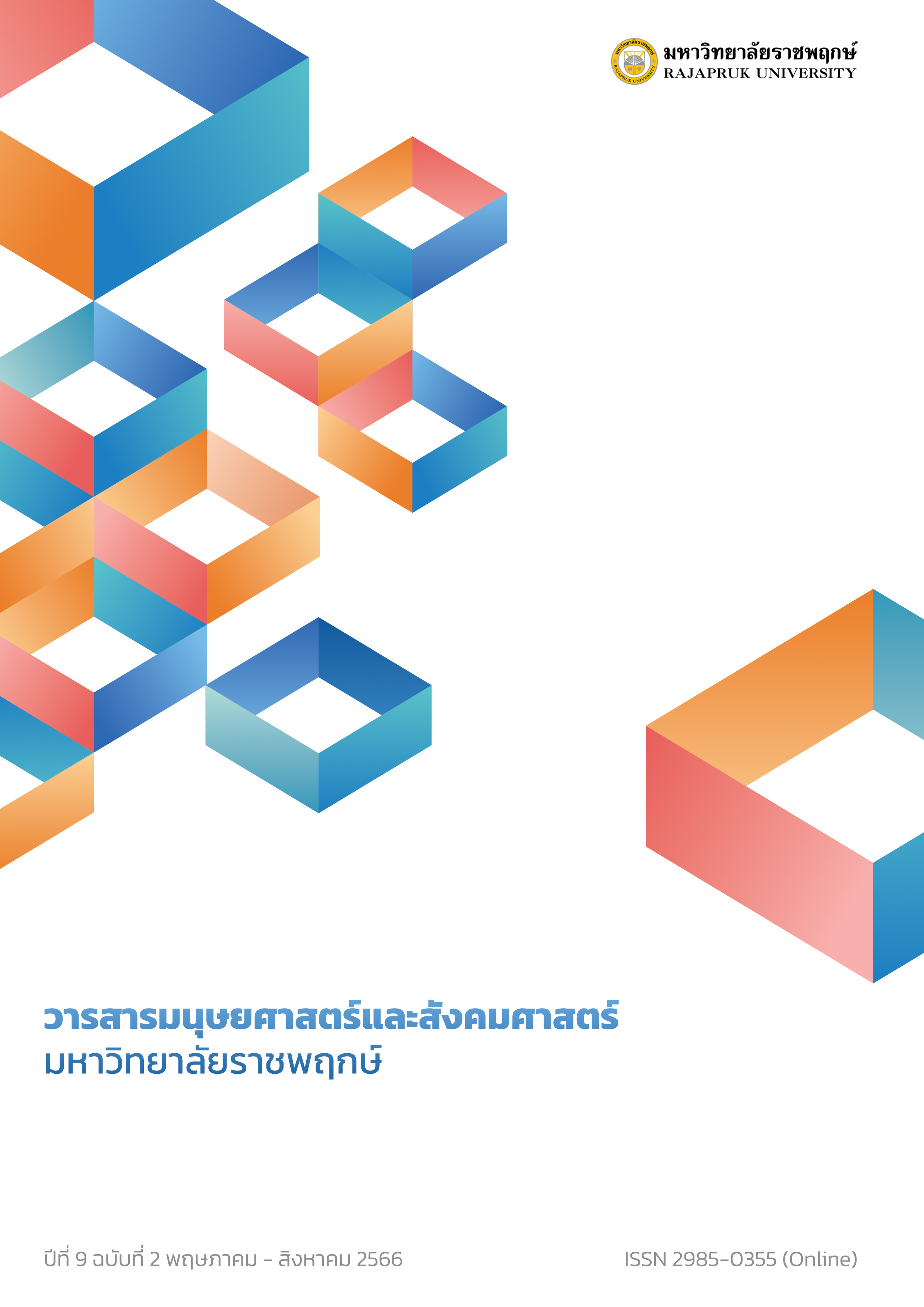การสร้างกิจการเพื่อสังคมเพื่อการจัดนิทรรศการศิลปะเชิงนิเวศ
Main Article Content
บทคัดย่อ
การวิจัยนี้มีวัตถุประสงค์เพื่อออกแบบการสร้างกิจการเพื่อสังคม (Social Enterprise) สำหรับการจัดแสดงนิทรรศการศิลปะเชิงนิเวศ (Ecological Art Exhibition) และเพื่อออกแบบการเพิ่มมูลค่าทางเศรษฐกิจ จากการจัดประมูลศิลปะเชิงนิเวศ และนำรายได้ไปพัฒนาระบบการจัดการขยะของชุมชนริมน้ำต้นแบบ และพัฒนาระบบนำร่องขยายผลไปยังชุมชนริมน้ำแห่งอื่นทั่วโลก ที่รายได้หลักจะมาจากการประมูลงานศิลปะเชิงนิเวศที่ได้จัดแสดงดังกล่าว ซึ่งถูกรังสรรค์โดยศิลปินที่ชื่อเสียงระดับโลกและมีอุปสงค์ทางในตลาดสูง ทั้งนี้เพื่อสร้างความตระหนักรู้ให้แก่ประชาชนผู้เข้าชมทั่วไป โดยหวังว่าจะสามารถเปลี่ยนแปลงพฤติกรรมของการทิ้งขยะ อีกทั้งยังแก้ไขปัญหาขยะที่ปนเปื้อนอยู่ในระบบนิเวศในปัจจุบัน ด้วยการนำเงินรายได้จากการประมูลงานศิลปะเชิงนิเวศที่จัดแสดง มาพัฒนาระบบการจัดการขยะ ให้กับชุมชนริมน้ำต้นแบบเพื่อนำไป ขยายผลต่ออีกหลาย ๆ ชุมชนริมน้ำทั่วโลกในอนาคต คณะผู้วิจัยได้ทำการวิเคราะห์ข้อมูลโดยใช้เครื่องมือทำแผนธุรกิจ Business Model Canvas และแผนการตลาด Modern Marketing Model ที่ผสานความรู้การประกอบธุรกิจแบบเดิมกับเทคโนโลยีปัจจุบันเพื่อให้บรรลุวัตถุประสงค์ที่คณะผู้วิจัยได้กำหนดไว้
ผลวิจัย พบว่า 1) ประเทศไทยมีความเหมาะสมที่จะเป็นผู้นำในการสร้างกิจการเพื่อสังคม 2) ประเทศไทยมีความพร้อมและมีทรัพยากรมากเพียงพอที่จะเป็นศูนย์กลางของเศรษฐกิจการจัดนิทรรศการเชิงนิเวศ 3) โครงการนี้สามารถนำไปสู่การลดปัญหาด้านมลพิษขยะริมน้ำ ที่สอดคล้องกับแนวคิด Sustainable Development Goals ของ United Nations (2015) ผ่านการอนุรักษ์ระบบนิเวศทางน้ำ ทะเล มหาสมุทร และลดการศูนย์เสียประชากรสิ่งมีชีวิตในน้ำอย่างยั่งยืน 4) นิทรรศการศิลปะเชิงนิเวศสามารถสร้างความตระหนักรู้และนำไปสู่การเปลี่ยนแปลงพฤติกรรมของประชาชนได้
Article Details
เอกสารอ้างอิง
ไทยรัฐออนไลน์. (2566). ความสำเร็จบางกอก อาร์ต เบียนนาเล่ 2022 ทุบสถิติผู้เข้าชม 17 ล้านคนทั่วโลก. สำนักข่าวไทยรัฐออนไลน์, ค้นเมื่อวันที่ 5 สิงหาคม 2566, จาก https://www.thairath.co.th/lifestyle/life/2707206
สฤณี อาชวานันทกุล และคณะ. (2560). โครงการวิจัยเพื่อพัฒนาองค์ความรู้ด้านการประเมินผลลัพธ์ทางสังคมสำหรับกิจการเพื่อสังคม. กรุงเทพฯ: สำนักงานกองทุนสนับสนุนงานวิจัย.
Ashenfelter, O., & Graddy, K. (2006). Chapter 26 Art Auctions. Handbook of the Economics of Art and Culture, 909–945.
Coates, A. (2018). Modern Marketing and the C-Suite: Econsultancy US launches the M3 Blueprint program, Econsultancy. Retrieved on August, 4th, 2021, from https://econsultancy.com/modern-marketing-and-the-c-suite-econsultancy-us-launches-the-m3-blueprint-program/?
Friedlein, A. (2017). Introducing the Modern Marketing Model (M3). Retrieved on March, 27th, 2021, https://econsultancy.com/introducing-the-modern-marketing-model-m3/
Geyer, R., Jembeck, J. and Law, K.L. (2017). Production, use, and the fate of all plastics ever made. Science Advances, 3:e1700782
Lorin Purcarea. (2019). The impact of marketing strategies in healthcare systems. Journal of medicine and life, 12(2): 93-96.
Mcquilten, G., & White, A. (2015). Impact and Sustainability in Art Based Social Enterprises Impact and Sustainability in Art Based Social Enterprises. Retrieved on August, 4th, 2023, from https://arts.unimelb.edu.au/__data/assets/pdf_file/0010/1867843/rupc-working-paper-mcquilten-white.pdf
Moingeon, B., Lehmann-Ortega, L., & Yunus, M. (2010). Building Social Business Models: Lessons from the Grameen Experience. Long Range Planning, 43(2-3): 308-325.
Osterwalder, A., and Y. Pigneur. (2009). The Business Model Canvas: Tool to Help You Understand a Business Model. Business Models Inc. 2009. Retrieved on August, 4th, 2021, from https://www.businessmodelsinc.com/about-bmi/tools/business-model-canvas/
Prestigeonline Singapore (2021). Sustainable Art is Making its Way into Auction Houses. Retrieved on August, 4th, 2021, from https://www.prestigeonline.com/sg/lifestyle/art-plus-design/sustainable-art-is-making-its-way-into-auction-houses/
Reddy, S. and Dass, M. (2006). Modeling On-Line Art Auction Dynamics Using Functional Data Analysis. Institute of Mathematical Statistics, 21(2): 179-193.
Richardson, M. (2015). กิจการเพื่อสังคมในสหราชอาณาจักร. British Council, F126.
Ritchie, H. and Roser, M. (2018). Plastic Pollution. Global change Data Lab. Retrieved on March, 7th, 2021, from https://ourworldindata.org/plastic-pollution
Rochman, C.M. Browne, M.A., Underwood, A.J., Van FraneKer, J.A. Thompson, R. C., & Amaral-Zettler, L.A. (2016). The Ecological Impacts of Marine Deris: Unravelling the Demonstrated Evidence from what is Perceived. Ecology, 97(2): 302-312. Retrieved on August, 4th, 2021, from https://esajournals.onlinelibrary.wiley.com/doi/abs/10.1890/14-2070.1
Sarawut Sangkham. (2020). Face mask and medical waste disposal during the novel COVID-19 pandemic in Asia. Chemical and Environmental Engineering, 2 (2020) 100052: 1-9.
Siegeris, J. and Grasl, O. (2008). Model Driven Business Transformation: An Experience Report. Retrieved on August, 4th, 2021, from https://link.springer.com/chapter/10.1007/978-3-540-85758-7_6
Thaibunterng ThaiPBS. (2013) งานประมูลศิลปกรรมแห่งชาติ ครั้งที่ 1. ค้นเมื่อวันที่ 22 ธันวาคม 2564, จาก https://www.youtube.com/watch?v=Xg5Bnj9Hy7w
United Nations Department of Economic and Social. (2015). The 2030 Agenda for Sustainable Development. United Nations. Retrieved on March, 27th, 2021, from https://sdgs.un.org/goals.
Wallen, R. (2012). Ecological Art: A Call for Visionary Intervention in a Time of Crisis. Environment 2.0, 45(3): 234-242.


